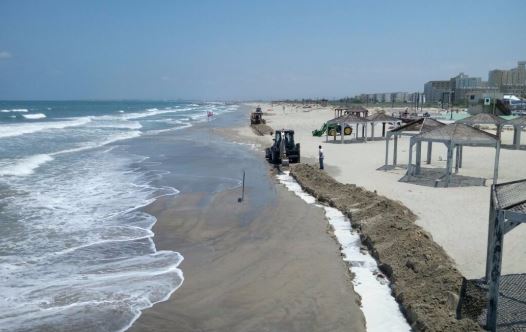Is Haifa Bay air pollution linked to cancer? Israeli study suggest so
The study also underlines the urgency of evacuating the petrochemical industry from the site.
 Oil spill in the Haifa Bay, July 5, 2016(photo credit: ENVIRONMENT PROTECTION MINISTRY)Updated:
Oil spill in the Haifa Bay, July 5, 2016(photo credit: ENVIRONMENT PROTECTION MINISTRY)Updated: